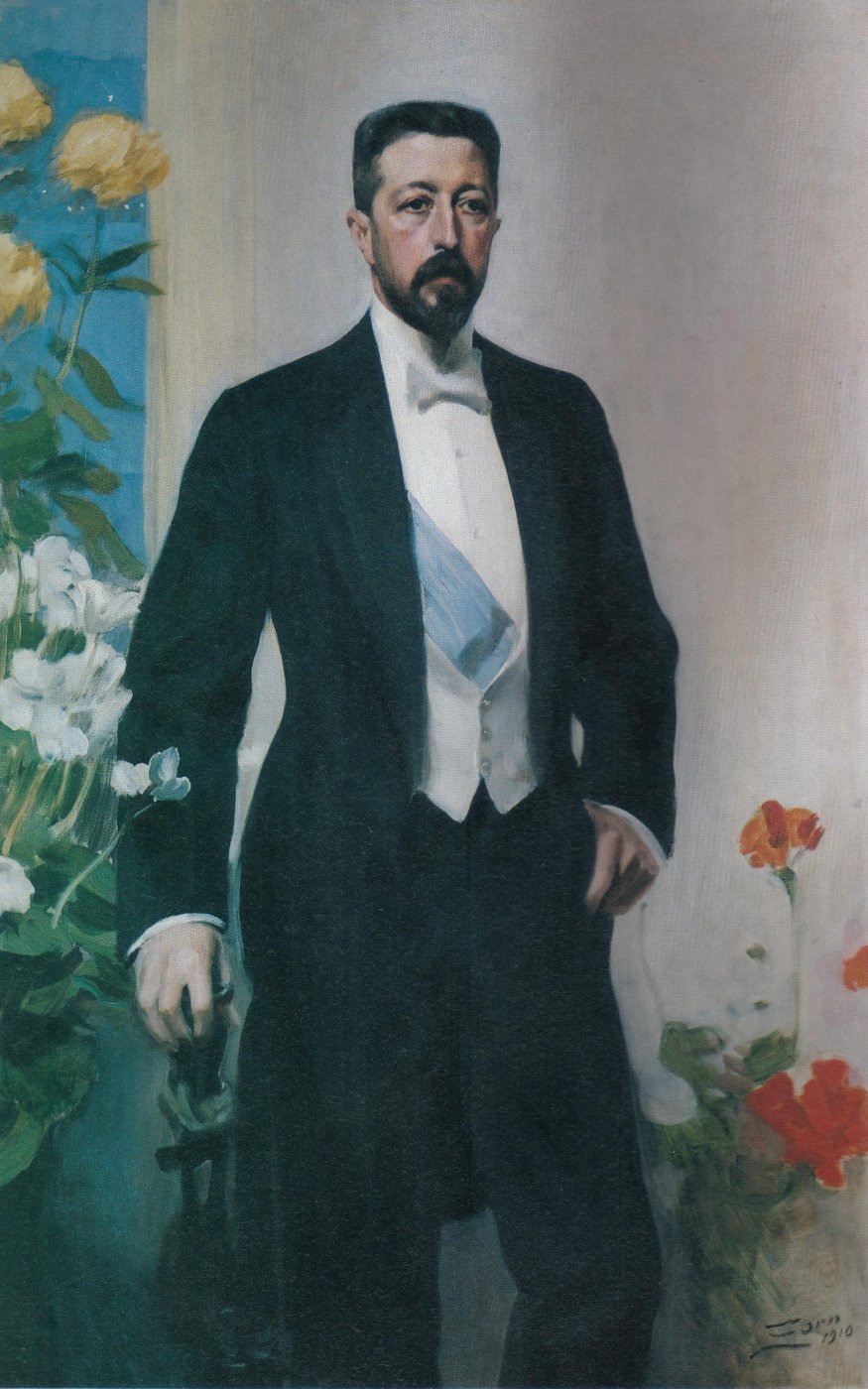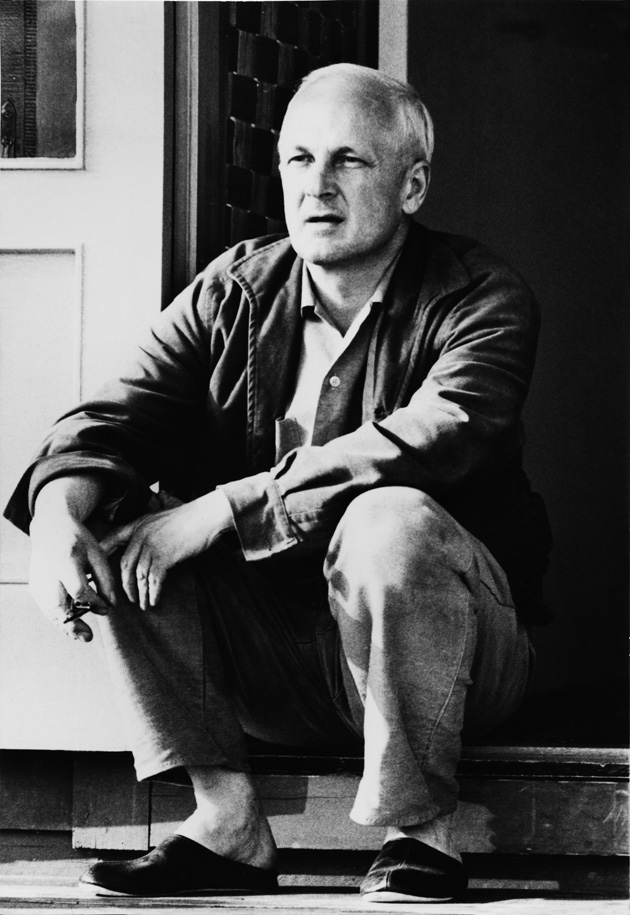|
Vuokko Nurmesniemi
Vuokko Hillevi Lilian Eskolin-Nurmesniemi (born 12 February 1930 in Helsinki) is a Finnish textile designer. She is best known for her work as one of the two leading designers of the Marimekko company. Her signature striped ''Jokapoika'' shirt helped to make the company's name. Biography Vuokko Eskolin-Nurmesniemi studied ceramics at the Institute of Industrial Arts (in Finnish: ''Taideteollinen oppilaitos'') in Helsinki, Finland. After graduating, she designed glassware and ceramics for Arabia and Nuutajärvi. In 1957, she received a gold medal at the Milan Triennial XI for her glassware. Vuokko Eskolin-Nurmesniemi joined the Finnish company Marimekko in 1953. She designed patterns for many of their printed fabrics in the 1950s; together with Maija Isola, she was responsible for most of Marimekko's patterns. Nurmesniemi's signature product was a simply striped red and white shirt named ''Jokapoika'', in 1956; she went on to create a large number of striking designs. Nurmesnie ... [...More Info...] [...Related Items...] OR: [Wikipedia] [Google] [Baidu] |
Helsinki
Helsinki ( or ; ; sv, Helsingfors, ) is the capital, primate, and most populous city of Finland. Located on the shore of the Gulf of Finland, it is the seat of the region of Uusimaa in southern Finland, and has a population of . The city's urban area has a population of , making it by far the most populous urban area in Finland as well as the country's most important center for politics, education, finance, culture, and research; while Tampere in the Pirkanmaa region, located to the north from Helsinki, is the second largest urban area in Finland. Helsinki is located north of Tallinn, Estonia, east of Stockholm, Sweden, and west of Saint Petersburg, Russia. It has close historical ties with these three cities. Together with the cities of Espoo, Vantaa, and Kauniainen (and surrounding commuter towns, including the eastern neighboring municipality of Sipoo), Helsinki forms the Greater Helsinki metropolitan area, which has a population of over 1.5 million. Of ... [...More Info...] [...Related Items...] OR: [Wikipedia] [Google] [Baidu] |
Prince Eugen Medal
The Prince Eugen Medal ( sv, Prins Eugen-medaljen) is a medal conferred by the King of Sweden for "outstanding artistic achievement". The medal was established in 1945 by the then King of Sweden, Gustaf V, in connection with the eightieth birthday of his brother Prince Eugen who was a noted painter and art collector. It is awarded every year on 5 November, the name day of Eugen, and presented to the winners at the Royal Palace in Stockholm. Medallists The following people have received the Prince Eugen Medal since its inception. Winners are Swedish unless denoted otherwise. Architects Painters Graphic Artists Sculptors Artisans Photographers Draftsmen Designers See also * Orders, decorations, and medals of Sweden *List of European art awards *Prizes named after people A prize is an award to be given to a person or a group of people (such as sporting teams and organizations) to recognize and reward their actions and achievements. [...More Info...] [...Related Items...] OR: [Wikipedia] [Google] [Baidu] |
Finnish Fashion Designers
Finnish may refer to: * Something or someone from, or related to Finland * Culture of Finland * Finnish people or Finns, the primary ethnic group in Finland * Finnish language Finnish ( endonym: or ) is a Uralic language of the Finnic branch, spoken by the majority of the population in Finland and by ethnic Finns outside of Finland. Finnish is one of the two official languages of Finland (the other being Swedis ..., the national language of the Finnish people * Finnish cuisine See also * Finish (other) * Finland (other) * Suomi (other) * {{disambiguation Language and nationality disambiguation pages ... [...More Info...] [...Related Items...] OR: [Wikipedia] [Google] [Baidu] |
Textile Designers
Textile is an umbrella term that includes various fiber-based materials, including fibers, yarns, filaments, threads, different fabric types, etc. At first, the word "textiles" only referred to woven fabrics. However, weaving is not the only manufacturing method, and many other methods were later developed to form textile structures based on their intended use. Knitting and non-woven are other popular types of fabric manufacturing. In the contemporary world, textiles satisfy the material needs for versatile applications, from simple daily clothing to bulletproof jackets, spacesuits, and doctor's gowns. Textiles are divided into two groups: Domestic purposes onsumer textilesand technical textiles. In consumer textiles, aesthetics and comfort are the most important factors, but in technical textiles, functional properties are the priority. Geotextiles, industrial textiles, medical textiles, and many other areas are examples of technical textiles, whereas clothing a ... [...More Info...] [...Related Items...] OR: [Wikipedia] [Google] [Baidu] |
Finnish Designers
Finnish may refer to: * Something or someone from, or related to Finland * Culture of Finland * Finnish people or Finns, the primary ethnic group in Finland * Finnish language, the national language of the Finnish people * Finnish cuisine See also * Finish (other) * Finland (other) * Suomi (other) Suomi means ''Finland'' in Finnish. It may also refer to: *Finnish language *Suomi (surname) *Suomi, Minnesota, an unincorporated community *Suomi College, in Hancock, Michigan, now referred to as Finlandia University *Suomi Island, Western Aust ... * {{disambiguation Language and nationality disambiguation pages ... [...More Info...] [...Related Items...] OR: [Wikipedia] [Google] [Baidu] |
Artists From Helsinki
An artist is a person engaged in an activity related to creating art, practicing the arts, or demonstrating an art. The common usage in both everyday speech and academic discourse refers to a practitioner in the visual arts only. However, the term is also often used in the entertainment business, especially in a business context, for musicians and other performers (although less often for actors). "Artiste" (French for artist) is a variant used in English in this context, but this use has become rare. Use of the term "artist" to describe writers is valid, but less common, and mostly restricted to contexts like used in criticism. Dictionary definitions The ''Oxford English Dictionary'' defines the older broad meanings of the term "artist": * A learned person or Master of Arts. * One who pursues a practical science, traditionally medicine, astrology, alchemy, chemistry. * A follower of a pursuit in which skill comes by study or practice. * A follower of a manual art, such as a ... [...More Info...] [...Related Items...] OR: [Wikipedia] [Google] [Baidu] |
Living People
Related categories * :Year of birth missing (living people) / :Year of birth unknown * :Date of birth missing (living people) / :Date of birth unknown * :Place of birth missing (living people) / :Place of birth unknown * :Year of death missing / :Year of death unknown * :Date of death missing / :Date of death unknown * :Place of death missing / :Place of death unknown * :Missing middle or first names See also * :Dead people * :Template:L, which generates this category or death years, and birth year and sort keys. : {{DEFAULTSORT:Living people 21st-century people People by status ... [...More Info...] [...Related Items...] OR: [Wikipedia] [Google] [Baidu] |
1930 Births
Year 193 ( CXCIII) was a common year starting on Monday (link will display the full calendar) of the Julian calendar. At the time, it was known as the Year of the Consulship of Sosius and Ericius (or, less frequently, year 946 '' Ab urbe condita''). The denomination 193 for this year has been used since the early medieval period, when the Anno Domini calendar era became the prevalent method in Europe for naming years. Events By place Roman Empire * January 1 – Year of the Five Emperors: The Roman Senate chooses Publius Helvius Pertinax, against his will, to succeed the late Commodus as Emperor. Pertinax is forced to reorganize the handling of finances, which were wrecked under Commodus, to reestablish discipline in the Roman army, and to suspend the food programs established by Trajan, provoking the ire of the Praetorian Guard. * March 28 – Pertinax is assassinated by members of the Praetorian Guard, who storm the imperial palace. The Empire is auc ... [...More Info...] [...Related Items...] OR: [Wikipedia] [Google] [Baidu] |
Gothenburg
Gothenburg (; abbreviated Gbg; sv, Göteborg ) is the second-largest city in Sweden, fifth-largest in the Nordic countries, and capital of the Västra Götaland County. It is situated by the Kattegat, on the west coast of Sweden, and has a population of approximately 590,000 in the city proper and about 1.1 million inhabitants in the metropolitan area. Gothenburg was founded as a heavily fortified, primarily Dutch, trading colony, by royal charter in 1621 by King Gustavus Adolphus. In addition to the generous privileges (e.g. tax relaxation) given to his Dutch allies from the ongoing Thirty Years' War, the king also attracted significant numbers of his German and Scottish allies to populate his only town on the western coast. At a key strategic location at the mouth of the Göta älv, where Scandinavia's largest drainage basin enters the sea, the Port of Gothenburg is now the largest port in the Nordic countries. Gothenburg is home to many students, as the city inclu ... [...More Info...] [...Related Items...] OR: [Wikipedia] [Google] [Baidu] |
Metropolitan Museum Of Art
The Metropolitan Museum of Art of New York City, colloquially "the Met", is the largest art museum in the Americas. Its permanent collection contains over two million works, divided among 17 curatorial departments. The main building at 1000 Fifth Avenue, along the Museum Mile on the eastern edge of Central Park on Manhattan's Upper East Side, is by area one of the world's largest art museums. The first portion of the approximately building was built in 1880. A much smaller second location, The Cloisters at Fort Tryon Park in Upper Manhattan, contains an extensive collection of art, architecture, and artifacts from medieval Europe. The Metropolitan Museum of Art was founded in 1870 with its mission to bring art and art education to the American people. The museum's permanent collection consists of works of art from classical antiquity and ancient Egypt, paintings, and sculptures from nearly all the European masters, and an extensive collection of American ... [...More Info...] [...Related Items...] OR: [Wikipedia] [Google] [Baidu] |
Kaj Franck Prize
Kaj Gabriel Franck (9 November 1911 Vyborg, Grand Duchy of Finland – 26 September 1989 Santorini, Greece) was one of the leading figures of Finnish design and an influential figure in design and applied arts between 1940 and 1980. Franck's parents were Kurt Franck and Genéviève "Vevi" Ahrenberg. He was a Swedish-speaking Finn, and he was of German descent through his father. Franck was artistic director of the Arabia ceramics company (now part of Iittala Group) and artistic director and teacher at the College of Applied Arts – the predecessor of the University of Art and Design Helsinki (now Aalto University) – since 1945, but created designs for other companies as well. He was awarded the Prince Eugen Medal in 1964. The Design Forum Finland awards the yearly Kaj Franck Design Prize to a designer or team of designers working in the spirit of the late Kaj Franck. Recipients of the prize include Oiva Toikka (1992), Yrjö Kukkapuro (1995), Heikki Orvola (1998), Eero Aarni ... [...More Info...] [...Related Items...] OR: [Wikipedia] [Google] [Baidu] |






